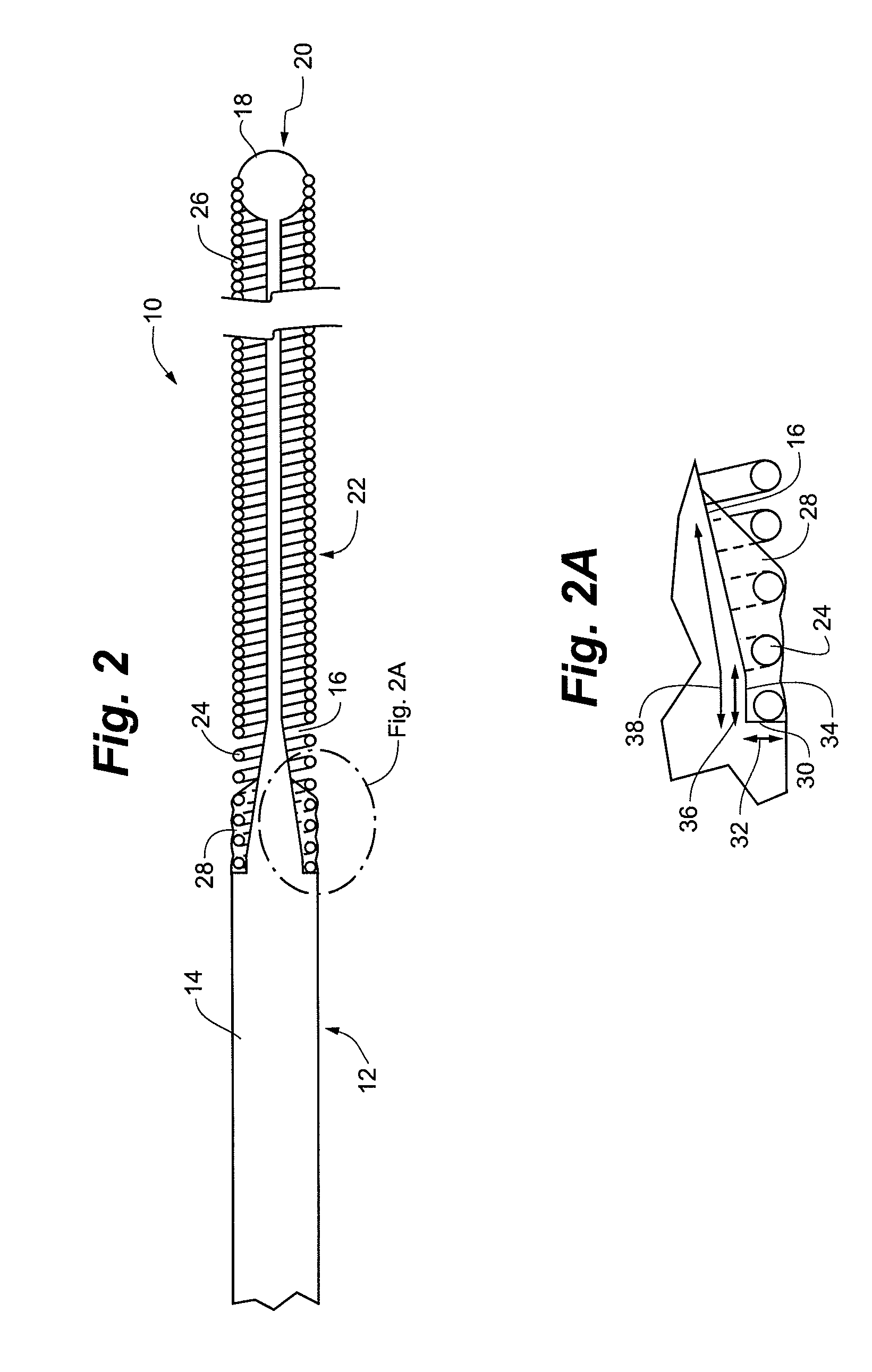Medical guidewire
a technology of guidewires and wires, applied in the field of medical devices, can solve the problems of limited flexibility, inconvenient use, and stiffness of steel core guidewires, and achieve the effects of enhancing flexibility, enhancing pushability, and significant junction area
- Summary
- Abstract
- Description
- Claims
- Application Information
AI Technical Summary
Benefits of technology
Problems solved by technology
Method used
Image
Examples
Embodiment Construction
[0021]The following detailed description should be read with reference to the drawings, in which like elements in different drawings are numbered identically. The drawings depict selected embodiments and are not intended to limit the scope of the invention. It will be understood that embodiments shown in the drawings and described below are merely for illustrative purposes, and are not intended to limit the scope of the invention as defined in the claims.
[0022]Guidewires are employed in a wide variety of medical procedures. As is known, guidewires are typically used to facilitate the placement of medical devices inside a patient's body. For example, one well-known procedure involves using guidewires for inserting catheters and other devices in the vascular system of the patient. As should be appreciated, the guidewires embodied herein should not be limited with respect to their scope of use. Instead, the embodied guidewires of the invention are applicable to any medical procedure in...
PUM
 Login to View More
Login to View More Abstract
Description
Claims
Application Information
 Login to View More
Login to View More - R&D
- Intellectual Property
- Life Sciences
- Materials
- Tech Scout
- Unparalleled Data Quality
- Higher Quality Content
- 60% Fewer Hallucinations
Browse by: Latest US Patents, China's latest patents, Technical Efficacy Thesaurus, Application Domain, Technology Topic, Popular Technical Reports.
© 2025 PatSnap. All rights reserved.Legal|Privacy policy|Modern Slavery Act Transparency Statement|Sitemap|About US| Contact US: help@patsnap.com



